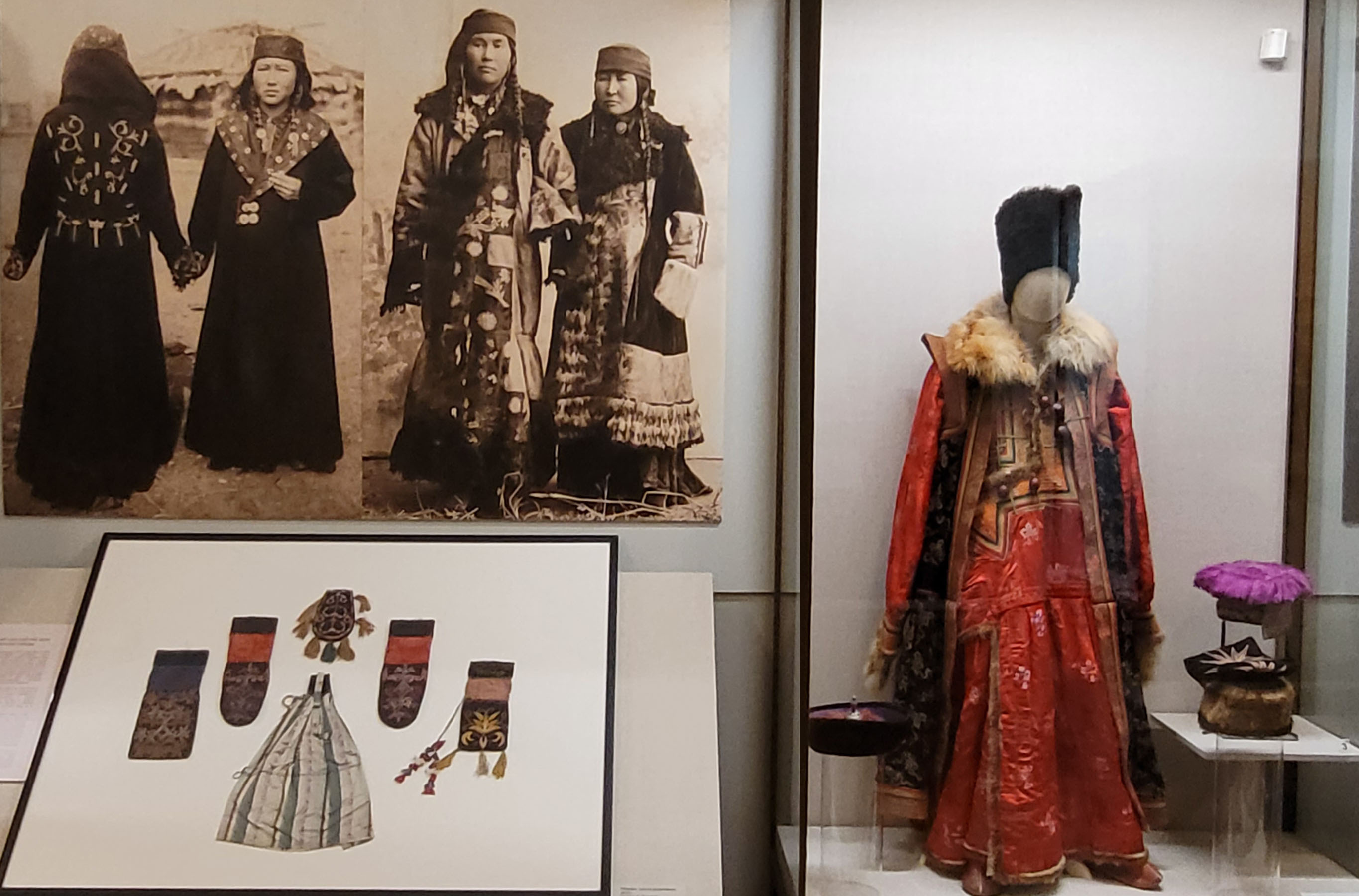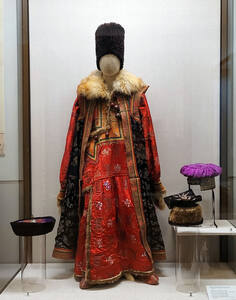Silk in the Traditional Culture of the Peoples of Central Asia and South Central Siberia

In South Central Siberia, only Shors, Northern Altaians, and Khakas of sub-boreal forests had indigenous weaving traditions with the use of vegetable fibers. The cultures of the Turco-Mongol peoples (modern Mongols, Buryats, Kalmyks, Tuvans, Altaians, and Khakas) had centuries-old traditions of using Chinese silk for festive and prestigious elements of both women’s and men’s garments and accessories, ceremonial caparison, as well as interior decor elements, which is confirmed not only by monuments of material culture preserved in museum collections but also in a rich folklore tradition. The elite social class used silk not only for costume elements but also to cover sheep fur coats, the essential piece of traditional winter outwear that ensured survival in the conditions of harsh climate and nomadic lifestyle. Aside from silk fabrics, the development of trade introduced the nomads to whole silk products. The Khakas adopted polychrome tambour chain-stitch embroidery and satin stitch as one of their national cultural symbols. Khakas craftswomen embroidered nearly all elements of festive clothing with colored silk threads: uncovered skin coats, demi-season sikpen jackets, sleeveless jackets for married women, shirts, hats, mittens, tobacco pouches, handbags, and even shoes. Floral ornaments dominated the embroidery imagery. Peculiar enough, this phenomenon has no parallels among the neighboring peoples of the region; however, a similar embroidery tradition is found in the Yakuts and Tungusic peoples of the Far East. In the modern era, the development of Russian and Chinese trade relations provided additional stimulus for the circulation of silk products among the wealthy population. In the 19th century, Russian silk manufacturers started successfully competing with Chinese ones and dominating the Khakas and the Kalmyk traditions.
Mittens, decorative purse, tobacco pouches
Minusinsk County, Yeniseysk Governorate. Late 19th – early 20th century. Khakas
Women’s festive attire
Biysk District, Tomsk Governorate. Early 20th century. Altaians
1. Men’s headgear. Irkutsk Governorate. Late 19th – early 20th century. Buryats
2. Men’s headwear. Minusinsk County, Yeniseysk Governorate. Late 19th – early 20th century. Khakas
3. Women’s headgear. Astrakhan Governorate. Late 19th – early 20th century. Kalmyks




